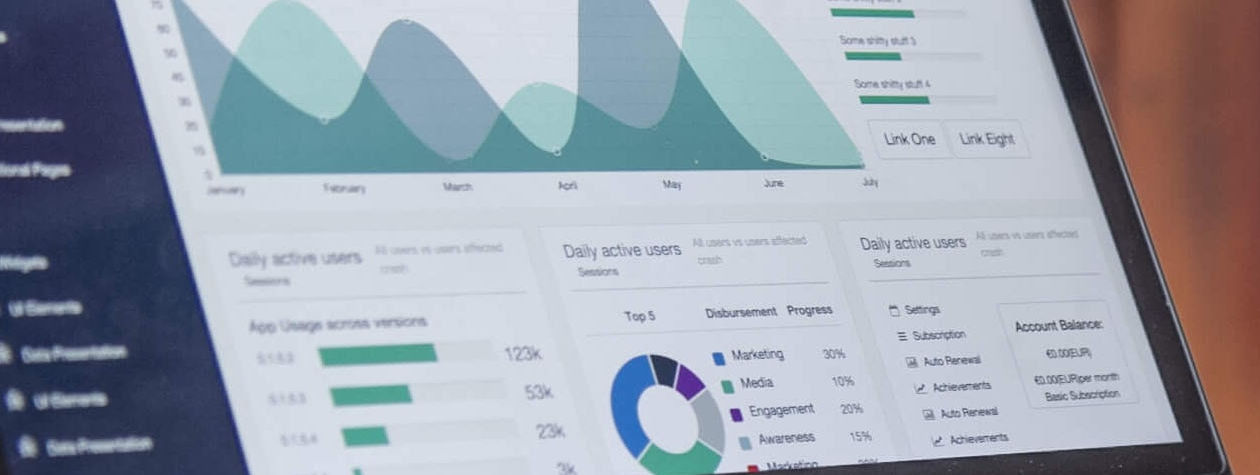The mountain of data we, as ecommerce founders can access is insightful at best and, at worse, overwhelming. Google Analytics alone can show you a thousand data points. But it’s what you do with this data that counts. And that’s where having ecommerce benchmarks and KPIs come in.
KPIs are specific goals for your business. They act as a road map to help you reach larger goals. Benchmarks enable you to understand how you’re performing within your industry or compared to last quarter.
Both are key to understanding your current performance and can be used to help you develop your future plans.
Being comfortable using KPIs is a great starting point. They can help turbocharge your performance. The next step is to add ecommerce benchmarks as they help give you greater context.
By the end of this article, you’ll have a much clearer idea of what ecommerce benchmarks are, why they are important, and how to use them.
What Are Ecommerce Benchmarks?
You might think you’re doing an amazing job as an ecommerce founder. You might have a steady flow of sales, cash in the bank, and you’re dreaming of a long fancy holiday to somewhere exotic!
However, without comparing your results to the wider industry, you won’t know if you’re performing poorly, ok, or great. That’s why you need benchmarks. They shouldn’t make you feel disappointed but highlight where your business’s performance should be.
As with KPIs, ecommerce benchmarks highlight where you should be as a business and give you a quick way to assess your performance. They should help you to continue improving your processes, management, and reporting.
What types of benchmarks can we set?
We can set and measure internal and external benchmarks.
Internal benchmarks
These help you to measure and compare different things within your own business. For example, comparing your sales this quarter to the same quarter last year is an example of internal benchmarking.
External benchmarking
These help you compare multiple data points from your business to standards outside your business. For example, comparing your sales this quarter to a competitor’s sales is a form of external benchmarking.

What ecommerce benchmarks can we set?
As an ecommerce business, you can set several benchmarks. These can reveal important insights about your business. These include:
- Average repeat customer rate
- Sales conversion rate
- Bounce rates
- Time on site
- Abandoned cart rates
- Page load time
- Average order value
- Net promoter score
- Customer retention
- Transaction path length
- Customer lifetime value
- Customer acquisition costs
- Click-through rate
- Average inventory sold per day.
You likely collect most or all of these data points. But you might not be using them to assess your business’s performance or understand how they can help you improve your business.
You could have a KPI for time on site of 3 minutes. Sounds great and is a good starting point. But your industry’s average could be 7 minutes. Understanding both of these data points is critical to your business’s success.
Another example is average order value (AOV). You could be happy with an AOV of $100. If you then find out that the industry average is $75, you’ll be very pleased with yourself!
So it’s important to understand how data points change over time within your business and also how they relate to your industry.
Setting Relevant Benchmarks For Your Ecommerce Brand
What stops many founders from setting benchmarks is knowing where to start, especially as you have access to thousands of data points. As with KPIs, it’s best to pick 2 or 3 overall benchmarks. You might also want another 1 or 2 per marketing channel or area of your business.
Don’t try and set 101 different benchmarks to measure, as you simply won’t! Instead, pick data points that are easy to measure and create a more detailed picture when added to your weekly KPIs.
Here are some examples of ecommerce benchmarks you can try.
Customer acquisition cost
Does your customer acquisition cost (CAC) always goes down in Q3 compared to Q1, or does it always explode in December?
Having a benchmark for CAC ensures you’re not wasting your marketing budget but also enables you to understand the context of the ups and downs across the year.
To calculate your CAC: customer acquisition cost = amount spent on marketing / # of new customers
You might want to calculate your annual CAC and divide by 12, as this benchmark will allow you to monitor your spend each month. You could find the average CAC for your industry and use that as your benchmark.
Customer lifetime value
Another metric to benchmark and track is the Customer lifetime value (CLV), which is the total revenue your business can expect from a single customer during their relationship with the brand.
To calculate CLV: customer lifetime value = average value of a purchase x # of times the customer will buy each year x average length of the customer relationship (in years)
Having this figure helps you to know how much you can spend on acquiring a customer while remaining profitable. Again, you should be able to find an average CLV for your industry that you can use as your benchmark.
Average order value (AOV)
If you have a revenue goal, knowing the AOV will help you understand how many customers you need to acquire. The AOV is the amount a customer typically spends each time they visit your store.
To calculate AOV: average order value = total revenue / total number of orders
You can track your AOV every quarter and against averages for your industry.
Net promoter score
Measuring customer loyalty and satisfaction is vital to ensuring you’re doing well. Many businesses use a net promoter score (NPS), calculated by asking your customers: “On a scale of 1–10, how likely are you to recommend us to a friend or family member?”
Anybody who answers a 9 or 10 is considered a promoter. Someone who scores the business as a 7 or 8 is considered passive. A score of 6 or less is considered a detractor.
Calculate your net promoter score: NPS = % of promoters – % of detractors
The higher your net promoter score, the better. Any score over 0 is considered good, and scores over 50 are considered excellent. You could set a benchmark of 60% that you measure quarterly. If your score drops, you’ll need to talk to customers and fix any issues you find.

How To Analyze Your Ecommerce Benchmarks To Improve Sales and Marketing
Just having ecommerce benchmarks or collecting multiple data points each month won’t do much for your business. You need to draw insights from the data and analyze them within the context of your KPIs and benchmarks.
It’s worth measuring your performance monthly. Ask yourself:
- Do my benchmarks and KPIs still make sense?
- Are we performing well against these?
- Should I tweak my benchmarks and KPIs?
- What does the data tell us?
- Are we on track to reach our goals?
You’ll also want to consider the data source and if it’s still the best option. For internal benchmarks, this is easy as you can pull data from Shopify/Magento and Analytics. External benchmarks might require a little more effort to verify that they are correct.
With some external ecommerce benchmarks, having a data point to measure is far more useful than not, regardless if the figure is accurate or not. I know this sounds wrong or clunky, but understanding how you’re performing within the wider industry is critical.
In time, you can refine how you calculate the figures you’re using and maybe use a blended figure that is the average of multiple sources. Again it’s better to have a data point that you can score your business against than operating in the dark.
In a future post we’ll cover ecommerce benchmarks vs KPIs and explain why you need both to monitor the health of your business and marketing.
Need a partner who can design your rocket-fuel ecommerce growth strategies and supervise their execution?







